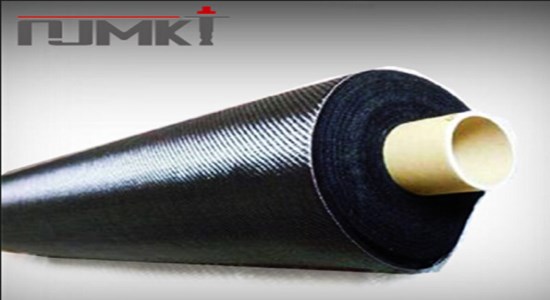Yesterday, we shared with you the use of slot filling glue in the reinforcement of reservoir dams. Many readers requested that the underwater carbon fiber cloth and underwater carbon fiber glue mentioned in the article at the end of the article be introduced. In the reinforcement of dams, it is often not enough to just use the slot filling glue. For some larger cracks, other reinforcement products are also needed. Today, we will share with you the actual use of underwater carbon fiber cloth.

In the reinforcement of reservoir dams, the sealing glue is only suitable for some small cracks. If larger cracks are encountered or the entire dam structure is reinforced, underwater carbon fiber cloths are used. Nanjing Mankate has special carbon fiber cloth for underwater use. The cloth can be used not only in a wet environment, but also underwater. It must be used together with Mankate underwater carbon fiber adhesive. The advantages of Nanjing Mankate underwater carbon fiber cloth adhesive include: no flow, no crystallization, low temperature curing, no primer coating, and impregnation, adhesion and repair, high seawater resistance, and It has good adhesion with most structural materials.
Underwater carbon fiber cloth and underwater carbon fiber glue construction methods:
1. Base surface treatment;
The sludge and moss on the surface are cleaned up, and then the loose surface is treated with a grinder until a firm ground layer is exposed.
2. Base leveling;
The special leveling glue for underwater use is stirred according to the weight ratio of component A: B component=2:1 to be completely uniform, and the screed can be scraped onto the concrete surface with a trowel. The thickness of each repair should not exceed 10 mm. If it is needed to repair the thicker layer, it can be applied to leveling glue respectively. After 24 hours, smear the next layer.
3. Cutting
According to the requirements of the drawings, the carbon cloth to be pasted is cut to size and flattened onto a double plastic film with a film thickness of about 10 filaments.
4. Mix
The underwater carbon fiber impregnated glue is put in an open container according to the weight ratio of A:B=3:1 and stirred at a low speed of not more than 300 rpm until the color and shape are completely uniform. During the stirring process, make sure all the parts can be touched to achieve the best mixing effect.
5. Pre-impregnated carbon cloth
The adjusted impregnated glue is repeatedly rolled in the fiber direction with a scraper until it penetrates into the carbon brim. The protective glue layer on one side of the carbon cloth needs to be slightly thicker, and the other layer of the double-layer film is spread on the carbon cloth. Put the carbon cloth into a small roll by carbon wire.
6. Paste the carbon fiber cloth
The construction personnel dive to the sticking position to spread the rolled carbon cloth, tear the film with a slightly thicker layer of adhesive, and stick the carbon cloth on the reinforcement base surface from one end to the other. When pasting, scraping repeatedly in the direction of the carbon wire to promote the straightening, spreading and non-foaming of the carbon fiber cloth.
The impregnated glue penetrates the surface of the concrete sufficiently. After pasting the cloth for 24 hours, tear off the other side of the film.
The above is the method of sticking underwater carbon fiber cloth and carbon fiber glue of Nanjing Mankate. It is very suitable for the reinforcement of the reservoir dams, bridges, underwater tunnels and other projects. We hope you can choose professional, dedicated and specialized Nanjing Mankate. We will serve you wholeheartedly.
Hotline: 400-894-5118.
Editor: Nanjing Mankate
Copyright belongs to www.njmkt.net, for reprint, please indicate the source!